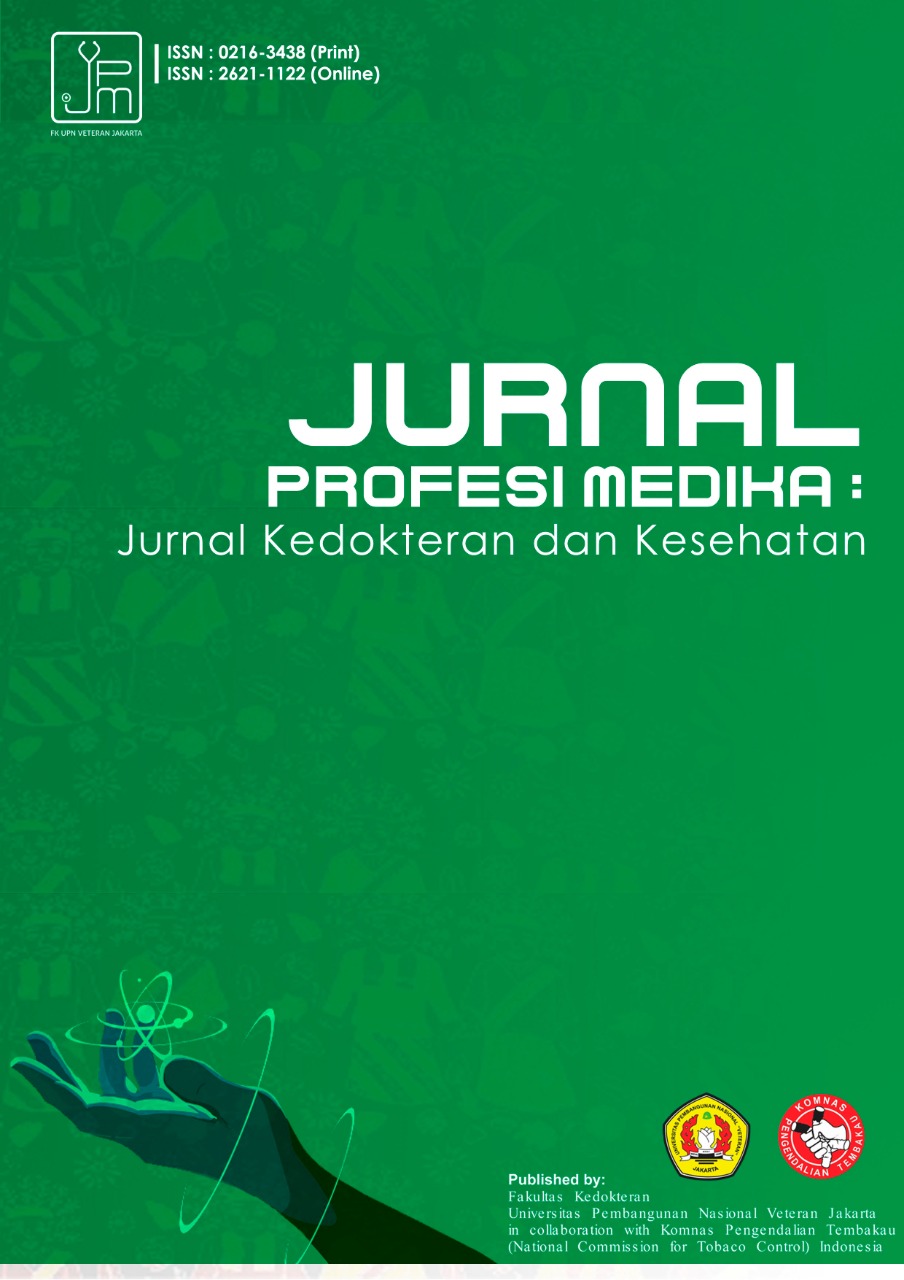A Review of Endometriosis: Focus on its Pathophysiology, Quality of Oocyte and Embryo, and the Management of Infertility
DOI:
https://doi.org/10.33533/jpm.v17i2.6789Keywords:
Endometriosis, Embryo quality, In vitro fertilization, Oocyte qualityAbstract
Endometriosis is a chronic inflammatory disease characterized by the presence of endometrial tissue/lesion outside of the uterus. Unveiling pathogenesis and pathophysiology of the disease remains an elusive target to be discovered. Among many other mechanistic theories, menstrual retrograde theory is favorable in explaining endometriosis which corroborated with certain survival factors that allow endometrial cells to grow and persist. This review set out to provide an update on oocyte and embryo quality derived from women with endometriosis who undergo IVF cycles. Database searching was conducted using PUBMED and the keyword used for literature searching was endometriosis, oocyte quality, and embryo quality. As a chronic inflammation occurs in reproductive tract, endometriosis has been demonstrated to negatively impact the oocyte quality and endometrial receptivity that leads to infertility. Account for about 10-40% of women with endometriosis administered in-vitro fertilization (IVF) programs to achieve pregnancy and healthy live-birth babies. Through IVF, oocytes can be fertilized and cultured in-vitro; thus, avoiding pra-implantation embryos to grow under unfavorable in-vivo tubal and endometrium environments due to endometriosis. IVF could be a method of choice for infertility treatment owing to endometriosis. Improved quality of oocyte, embryo as well as clinical pregnancy could be attained depending on endometriosis severity.
References
[1]. Hestiantoro A, Wiweko B, Pratama G, Yusuf D. Konsensus Penanganan Infertilitas. Konsensus penanganan infertil. 2013;
[2]. Krina T. Zondervan, D.Phil., Christian M. Becker MD, and Stacey A. Missmer SD. Endometriosis, Review Article. N Engl J Med. 2020;382(1244):56.
[3]. Gardner DK, Weissman A, Howles CM, Shoham Z, editors. Textbook of Assisted Reproductive Technologies. Third Edit. Textbook of Assisted Reproductive Technologies Laboratory and clinical perspectives. Informa; 2008.
[4]. Agarwal A, Gupta S, Sharma RK. Role of oxidative stress in female reproduction. Reprod Biol Endocrinol. 2005;3:1–22.
[5]. Khine YM, Taniguchi F, Harada T. Clinical management of endometriosis-associated infertility. Reprod Med Biol. 2016;15(4):217–25.
[6]. Filby CE, Rombauts L, Montgomery GW, Giudice LC, Gargett CE. Cellular Origins of Endometriosis: Towards Novel Diagnostics and Therapeutics. Semin Reprod Med. 2020;38(2–3):201–15.
[7]. Wu MH, Shoji Y, Chuang PC, Tsai SJ. Endometriosis: Disease pathophysiology and the role of prostaglandins. Expert Rev Mol Med. 2007;9(2):1–20.
[8]. Skorupskaite K, Bhandari HM. Endometriosis and fertility. Obstet Gynaecol Reprod Med. 2021;31(5):131–6.
[9]. Hamdan M, Dunselman G, Li TC, Cheong Y. The impact of endometrioma on IVF/ICSI outcomes: A systematic review and meta-analysis. Hum Reprod Update. 2015;21(6):809–25.
[10]. Rahmawati E, Chen CW, Chen YW, Hsieh CC, Ma PC, Tan SJ, et al. Assessment of endometriosis before conception. How to Improv Preconception Heal to Maximize IVF Success. 2018;40–50.
[11]. Practice T, Medicine R. Endometriosis and infertility: A committee opinion. Fertil Steril. 2012;98(3):591–8.
[12]. Lasiene K, Vitkus A, Valančiute A, Lasys V. Morphological criteria of oocyte quality. Medicina (B Aires). 2009;45(7):574–83.
[13]. Revelli A, Piane LD, Casano S, Molinari E, Massobrio M, Rinaudo P. Follicular fluid content and oocyte quality: From single biochemical markers to metabolomics. Reprod Biol Endocrinol. 2009;7:1–13.
[14]. Montag M, Toth B, Strowitzki T. New approaches to embryo selection. Reprod Biomed Online. 2013;27(5):539–46.
[15]. Borges E, Braga DP, Setti AS, Figueira RC, Pasqualotto FF, Iaconelli A. The influence of endometriosis on oocyte quality and embryo developmental competence. Fertil Steril. 2015;104(3):e201–2.
[16]. Orazov MR, Radzinsky VY, Ivanov II, Khamoshina MB, Shustova VB. Oocyte quality in women with infertility associated endometriosis. Gynecol Endocrinol. 2019;35(sup1):24–6.
[17]. Wiweko B, Iffanolida PA, Rectifa Z, Muna N, Mutia K, Febri RR, et al. BMP15 mRNA profile in granulosa cells from endometriosis patients undergoing in vitro fertilization. J Phys Conf Ser. 2018;1073(3):0–5.
[18]. Muna N, Wiweko B, Rectifa Z, Mutia K, Riayati O, Iffanolida PA, et al. Study of GDF9 and BMP15 mRNA profiles in granulosa cells to predict oocyte quality in endometriosis patients undergoing in vitro fertilization. J Phys Conf Ser. 2018;1073(3).
[19]. Practice T, Medicine R. Endometriosis and infertility: A committee opinion. Fertility and Sterility. 2012;98(3):591–8.
[20]. Montag M, Toth B, Strowitzki T. Newapproaches to embryo selection. Reproductive BioMedicine Online. 2013;27(5):539–46.
Downloads
Published
How to Cite
Issue
Section
Categories
License
Copyright (c) 2023 Jurnal Profesi Medika : Jurnal Kedokteran dan Kesehatan

This work is licensed under a Creative Commons Attribution-NonCommercial 4.0 International License.
Copyright Notice
All articles submitted by the author and published in the Jurnal Profesi Medika : Jurnal Kedokteran dan Kesehatan, are fully copyrighted by the publication of Jurnal Profesi Medika : Jurnal Kedokteran dan Kesehatan under the Creative Commons Attribution-NonCommercial 4.0 International License by technically filling out the copyright transfer agreement and sending it to the publisher
Note :
The author can include in separate contractual arrangements for the non-exclusive distribution of rich versions of journal publications (for example: posting them to an institutional repository or publishing them in a book), with the acknowledgment of their initial publication in this journal.
Authors are permitted and encouraged to post their work online (for example: in an institutional repository or on their website) before and during the submission process because it can lead to productive exchanges, as well as earlier and more powerful citations of published works. (See Open Access Effects).






